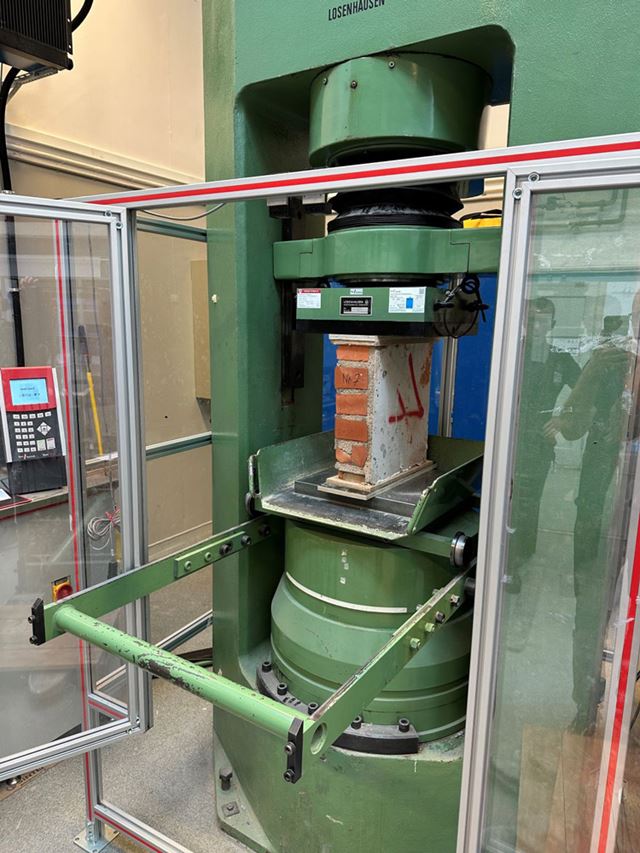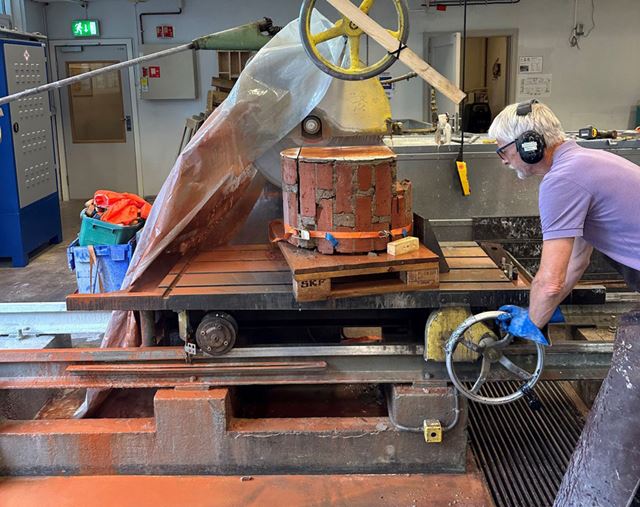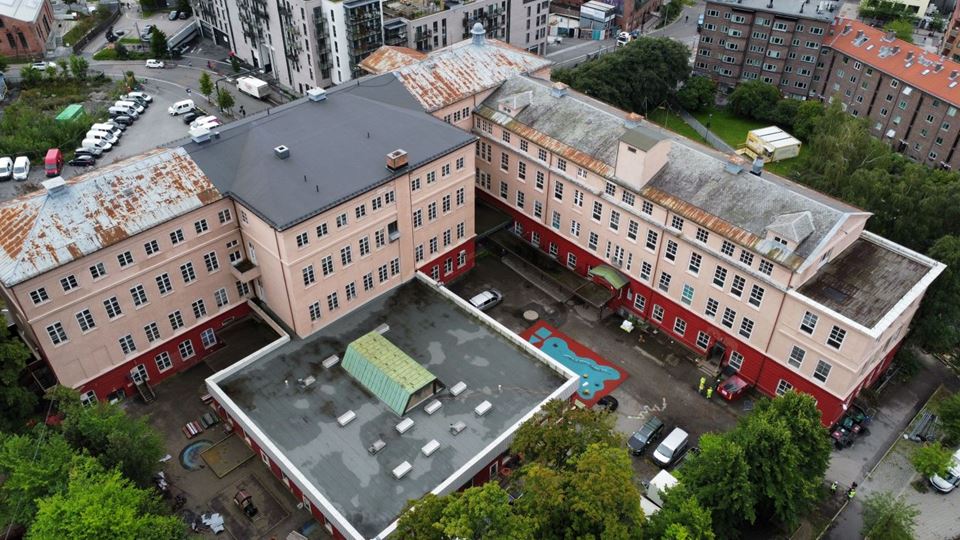The reuse and recycling of materials is important with a view to reducing waste and greenhouse gas emissions generated by the building sector. The developer Oslobygg KF has ambitious plans for renovation of the Sophies Minde building, which is part of Oslo University Hospital, and is getting plenty of support from researchers at SINTEF.
Everything from granite paving stones to baby changing tables and catering kitchen equipment will be reused in the new building. Construction supports from the old industrial building will also be given a new life, both in existing and new sections of the building. If possible, some of them will be reinforced with recycled steel.
Beams from the old vault arches have been recertified for use in reinforcement structures, and about 8,000 bricks from supporting and non-supporting brickwork walls have already been dismantled and prepared for reuse in the new building.
The contractors Vedal Entreprenør have already started to incorporate many of the doors taken from the old building, once they have been prepared for reuse.
How much can old brickwork support?
“The client wanted our help in assessing the remaining carrying capacity of the older supporting brickwork. They probably envisaged compressive strength testing of the bricks, and perhaps the mortar”, says Fredrik Slapø, who is a research scientist at SINTEF.
Previous projects have taught researchers at SINTEF that the compressive strength of individual bricks has little effect on that of the brickwork itself.

Test pieces are compressed using a hydraulic press at SINTEF’s laboratory. Photo: Fredrik Slapø
“We know, based on our own experiments and the literature, that the adhesion between the bricks and mortar is crucial to the compressive strength of the brickwork”, says Slapø.
“We’ve worked in the past on similar projects at a smaller scale, but this still feels like pioneering research.
For this reason, the client was advised against basing his decisions on separate testing of the bricks and mortar.
“As part of this project, it was important to identify the load-bearing capacity inherent in the construction so that we can limit the demand for steel reinforcement”, explains Slapø.
The municipal developer Oslobygg KF has plans to renovate even more buildings in Norway’s capital in the years ahead. Project Manager Mathias Kolsaker says that the renovation of Sophies Minde is one of the biggest such projects that the company has on its books.
“Every lesson that we learn from this project will be valuable. By testing and obtaining verification of the strength of existing materials, we can reduce the use of steel reinforcement in the renovated building”, he says.

Senior Engineer Erik Johansen at SINTEF seen here using a saw to make rectangular test pieces. Photo: Fredrik Slapø
Computing a safe limit
Following a comprehensive test programme, for which test pieces were cut from sections weighing several hundred kilos, the researchers were able to recommend a safe limiting value. In fact, the figure is 70 per cent higher than the traditional rule-of-thumb value for old brickwork (1 N/mm2). In short, the brickwork has been shown to be able to support a pressure equivalent to 100 tonnes per square metre.
“We’ve worked in the past on similar projects at a smaller scale, but this still feels like pioneering research. The work is demanding because the test pieces are large”, says Slapø. “But they are also fragile and must be handled with great care”, he says.
He is full of praise for both Vedal Entreprenør and Oslobygg KF for investing resources in the testing and computation process with the aim of utilising the capacity inherent in the old brickwork walls.
Testing has been carried out at SINTEF’s concrete testing laboratories, which offer the qualified personnel and equipment needed to carry out a broad range of standard concrete tests.
Key facts:
The heritage building Sophies Minde on Carl Berner’s Square in Oslo is being renovated by the contractors Vedal Entreprenør under contract from the municipal developers Oslobygg KF. The building covers a little more than 13,000 square metres and will house a kindergarten complex offering as many as 20 children's groups, together with a local community centre. It will be an important social hub for the Grünerløkka district.
The building formerly served as a hospital, but in recent years has been used as a kindergarten centre, during which time the uppermost floors have remained empty. When the renovation is finished, the entire building will once again be fully utilised.
The aim of the project is to achieve a rating of ‘excellent’ under the BREEAM-NOR ‘green building’ certification scheme. The renovation work will be carried out as an emission-free construction site.


